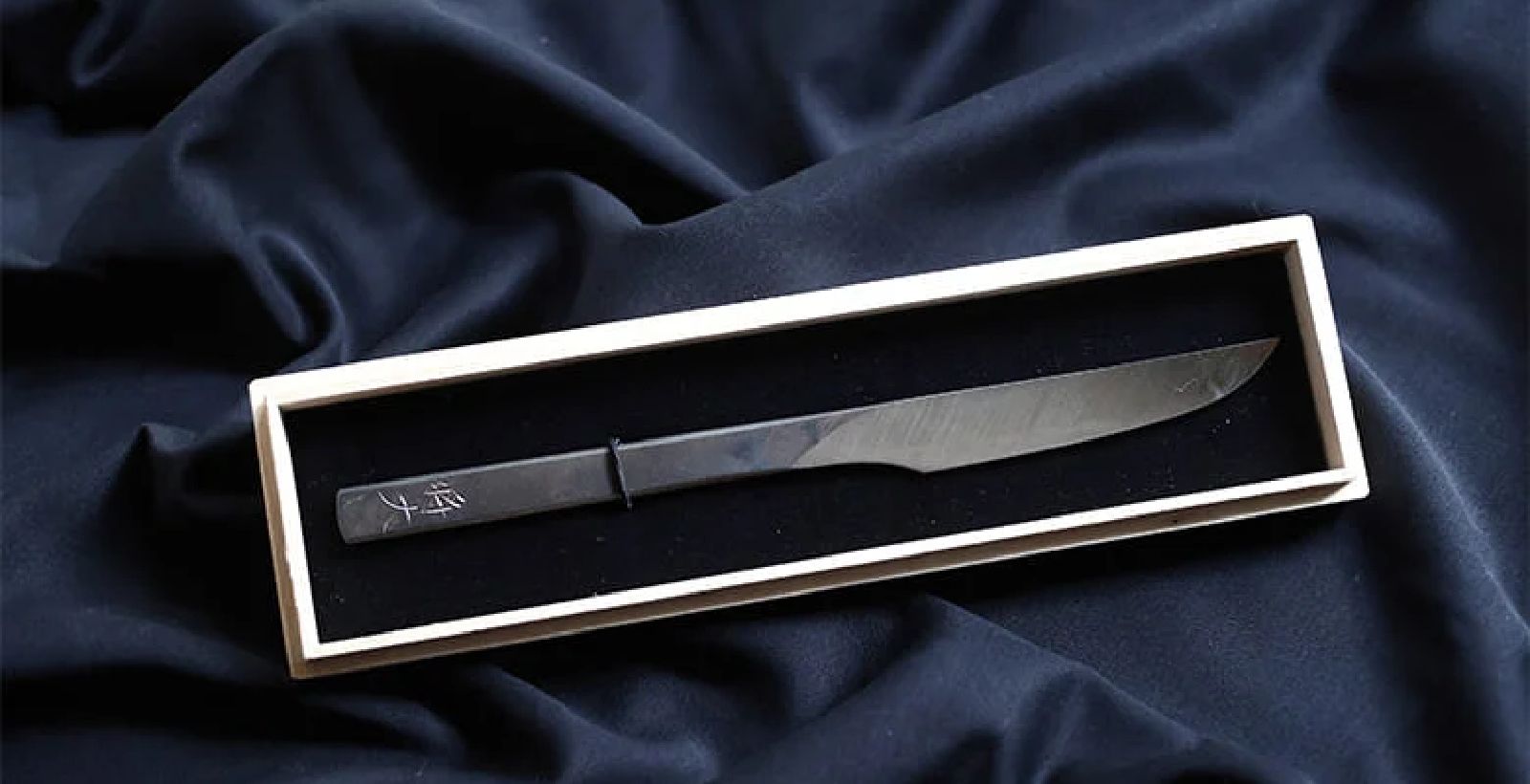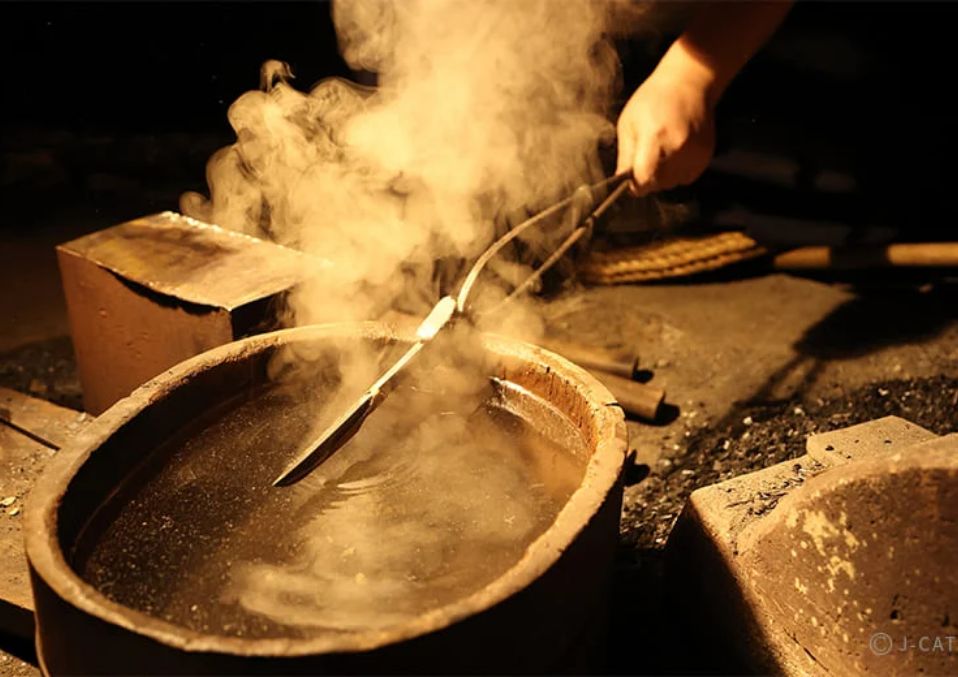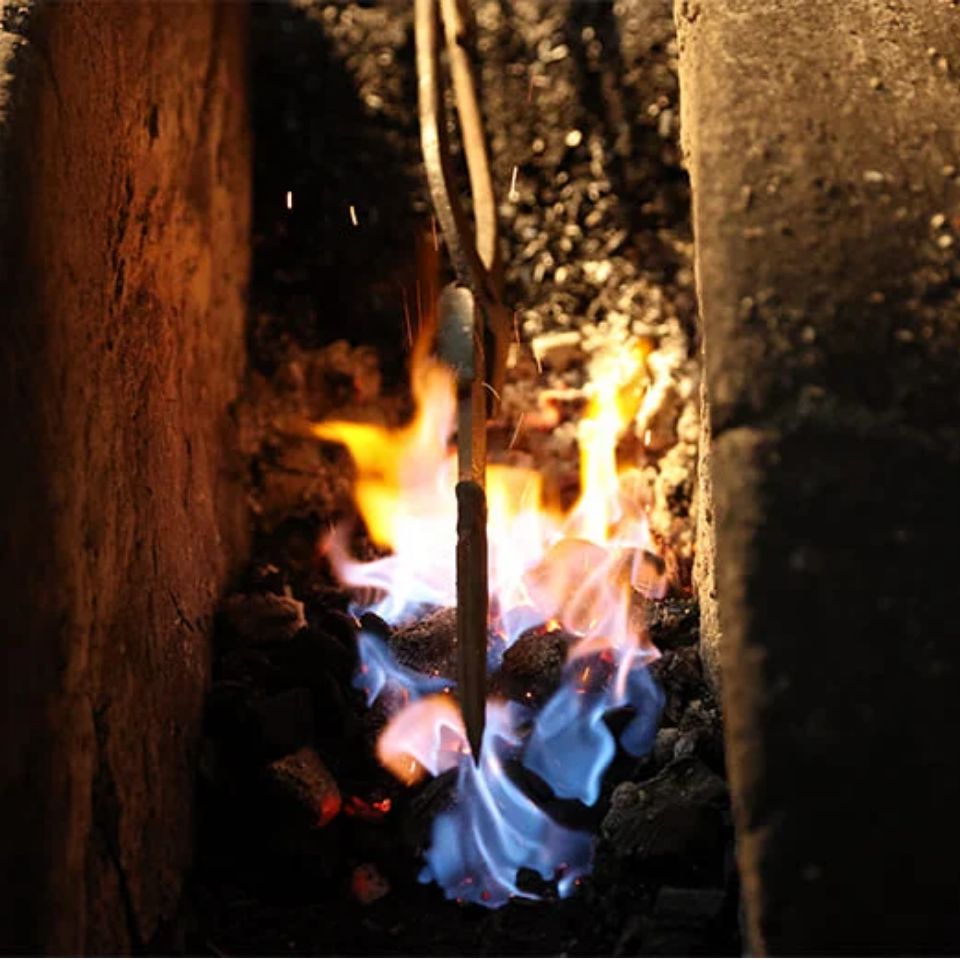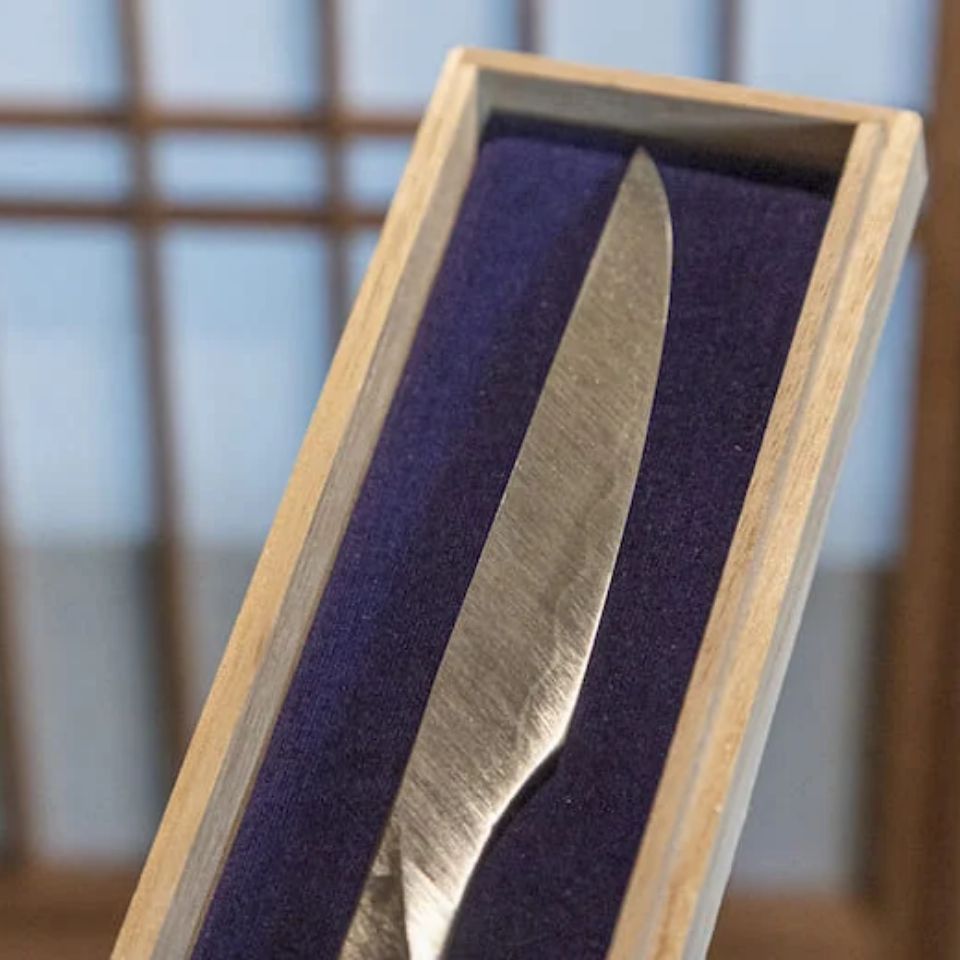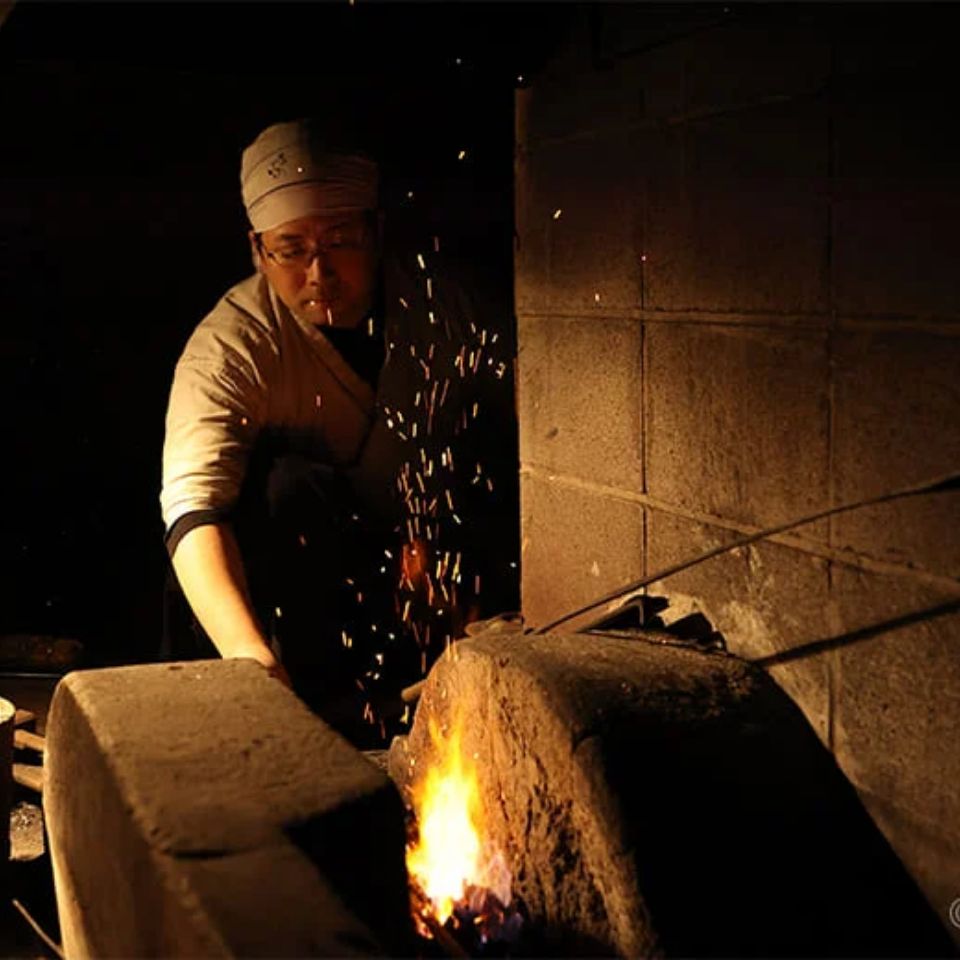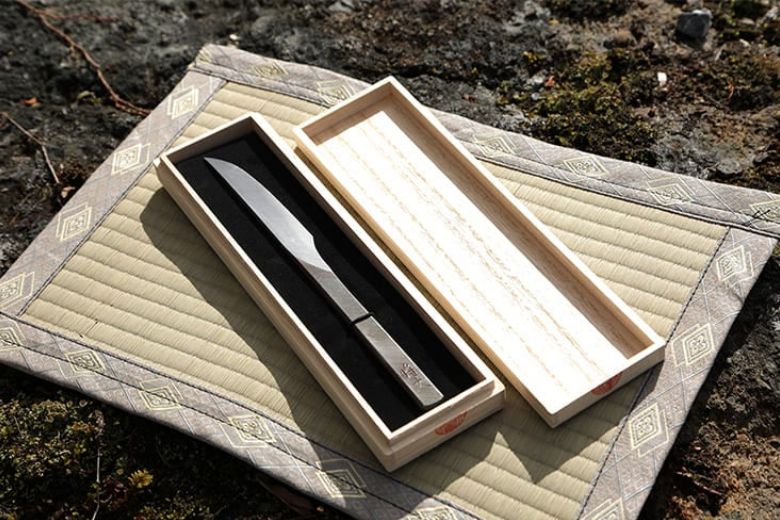
Discover the true value of Japanese culture through the work of a valuable swordsmith
Swords are made in the same process as Japanese swords at the site where active swordsmiths actually make swords. A small sword that you have designed yourself is a precious one of a kind. The feeling of hitting Tamagane in the midst of a flurry of sparks is something you can’t experience anywhere else, and it will further increase your interest in Japanese swords.
“Since ancient times, it has been said that a god lives in a sword. Start a fire, use the wind, touch the water ……. Japanese swords are made by feeling the presence of God in the process using the power of nature and matching with human technology. I think the third element of the sword, “mental support,” comes from the process of sword making.”
By actually hitting Tamagane, making blade sentences, and seeing the sword polished up close, you will be able to experience the precious value of Japanese swords. “Japanese swords share values with other traditional cultures. If you can realize that, you will have a deeper understanding of Japanese culture.” Nakanishi said. The book experience, which takes a step forward to challenge some of the work of swordsmiths, will teach us the wonders of traditional culture that goes on.
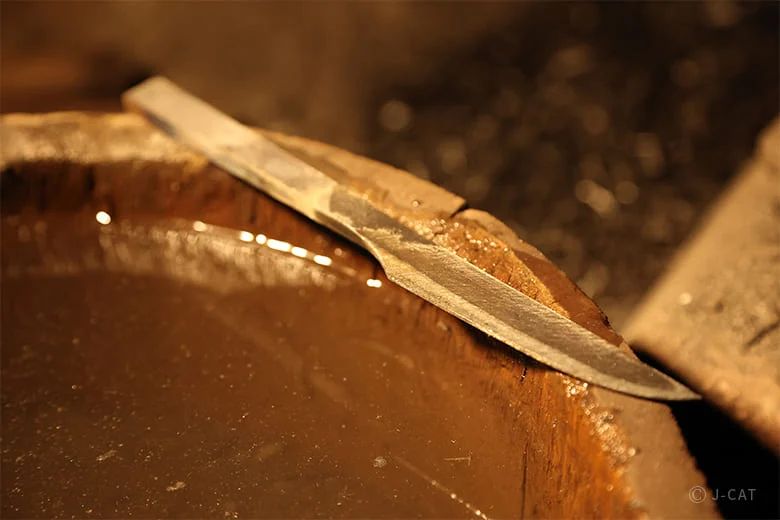
At a swordsmith’s forge, you can create an original small sword with a blade length of about 15 centimeters by designing the shape of the blade by beating tamagane with your own hand.
In this experience, you will create a ‘Tosugakogatana’ with the same handle, in which the extension of the blade becomes the handle. Swords are cutlery that are modern all-purpose small knives, and have been appreciated for cutting and shaving things since ancient times. In the same process as Japanese sword making, you use your own hands to make tamahagane, which is a small sword with a length of about 15 centimeters. There is also a process to handle fire, but you can rest assured that the swordsmith will support you until the end.
You can hear from young swordsmiths not only about production guidance but also about Japanese swords and how to appreciate them.
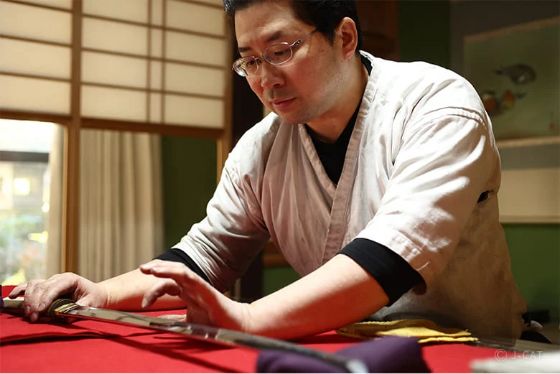
Shodaigatenjo is a swordsmithing workshop located on the outskirts of Kameoka, Kyoto, which is rich in nature. This is a swordsmith workshop where Nakanishi Yuya, one of the few swordsmiths in Japan, focuses on making swords.
Nakanishi, who admired real Japanese swords at a museum when he was young and had a strong admiration for swordsmithing, sought a master himself and became an apprentice to a master in Fukushima Prefecture at the age of 20. After seeing the master’s skills, he learned them by actually doing them, and after training, he returned to his hometown of Kyoto and became independent. Concerned about the situation in which Japanese swords are becoming unfamiliar to many Japanese, he actively holds “koto making experiences” for the general public while working on making swords.
Today, there are fewer opportunities to experience the appeal of swords. In order to learn about the Japanese sword culture that has existed since the Heian period, the Nakanishi clan will give you a lecture on the history of Japanese swords and tips on how to appreciate swords at the beginning of the experience.
Only swordsmiths are allowed to handle it, and it uses “Tamagane,” a high-quality material that makes the blade more beautiful. It comes with an inscription by a swordsmith.
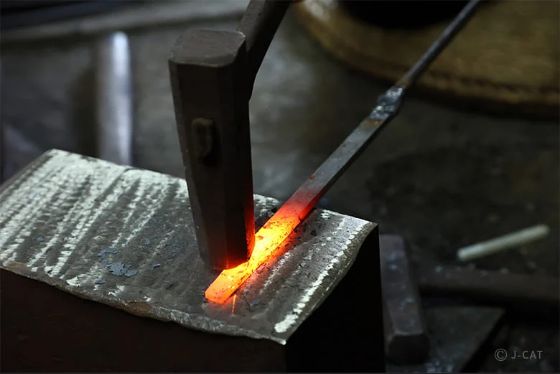
You will be moved to the workshop, where you will begin a short sword making experience with a process called “fire making”. Tamagane used in this experience is an essential material for making sharp and strong Japanese swords. It has both strength and flexibility, as well as rust-resistant features. It is a very pure iron that cannot be smelted using conventional ironmaking methods. Nakanishi first demonstrated the process of forming a small sword by beating hot ball steel in a furnace with a swordsmith’s hammer. After that, he followed Nakanishi’s lead in the challenge.
Next is “Dotori” which is the base work of the blade sentence. In the process of spreading dirt on the surface of Tamahagane, the blade part is avoided. At that time, the expression of the short sword changes depending on whether the boundary is made straight or wavy.
Finally, the highlight of the experience is the “quenching”. Once the soil has dried, heat the tamahagane again in a furnace to 800 degrees Celsius and place in a tub of water to cool rapidly. This is one of the most difficult steps, but you can rest assured that Mr. Nakanishi, who has a lot of experience, will guide you on when to remove the tamahagane from the fire.
After having Mr. Nakanishi sharpen, polish, and inscribe the katana to bring out the beauty of the katana, the original katana is completed. While waiting for the katana to be completed, you can observe the swordsmith’s techniques or rest in the tatami room. Please check the completion of the blade and inscription and take it home on the day.


